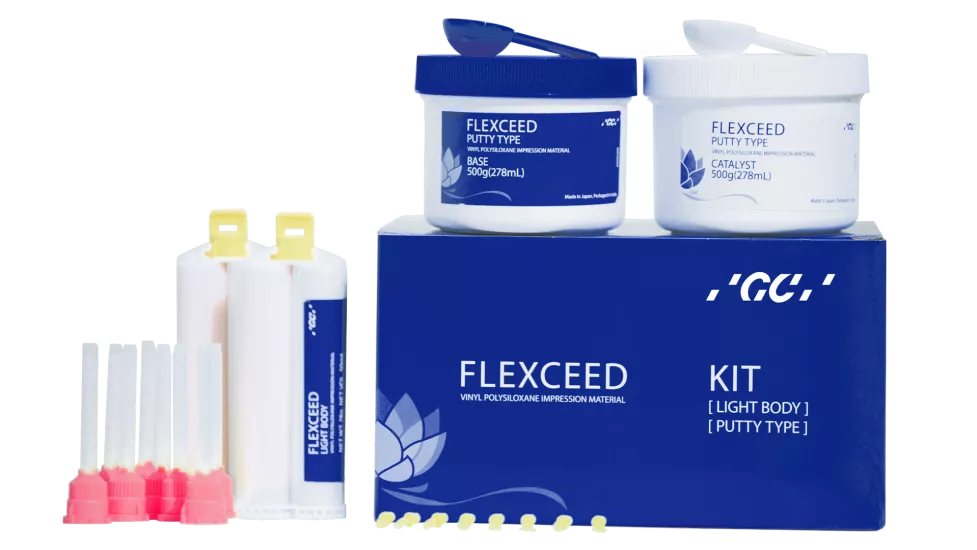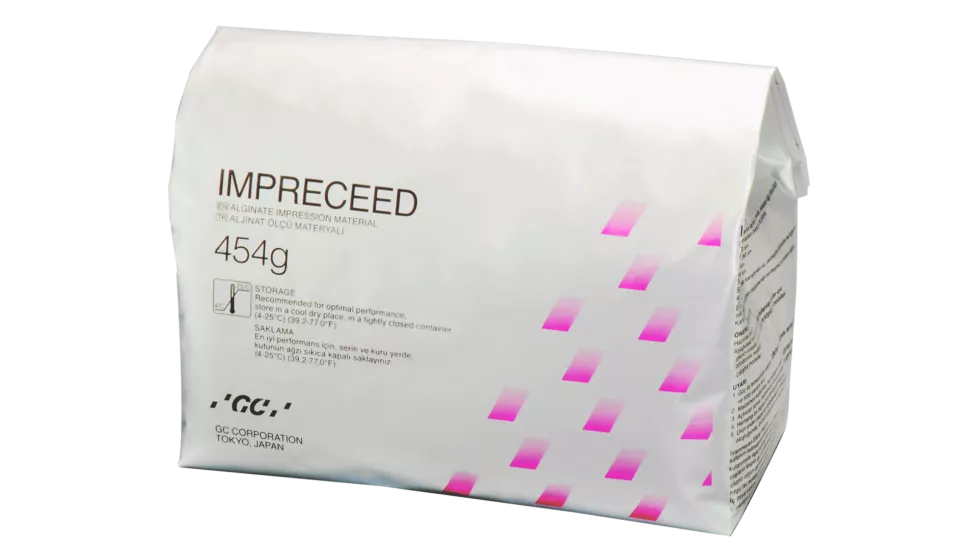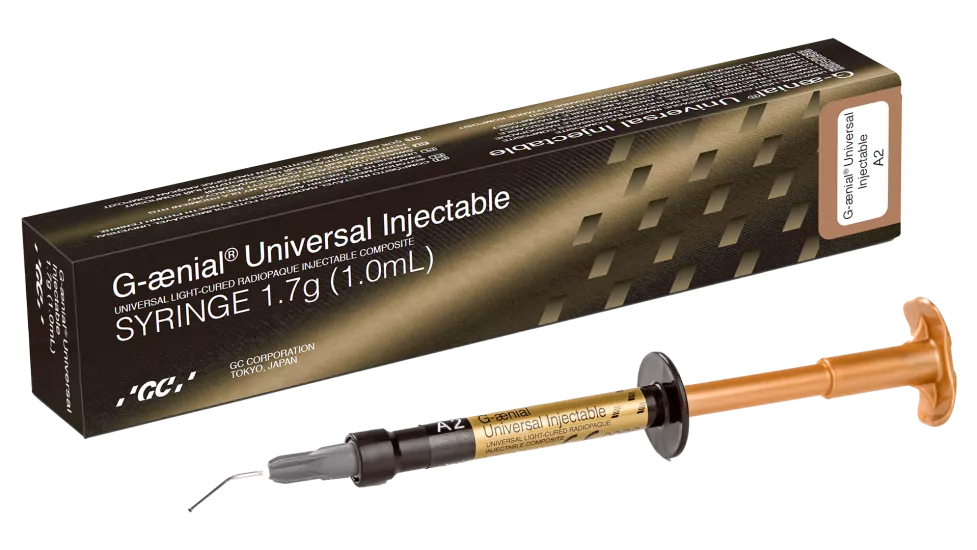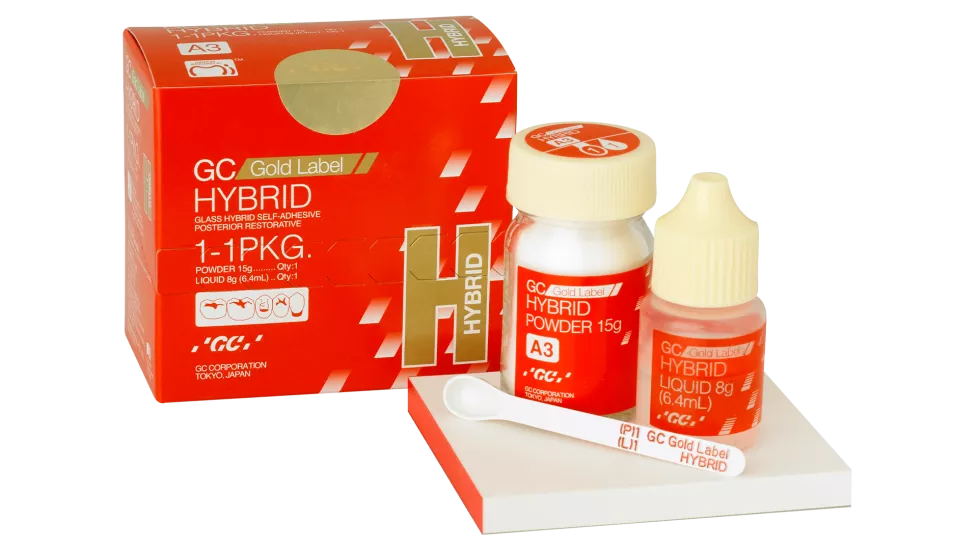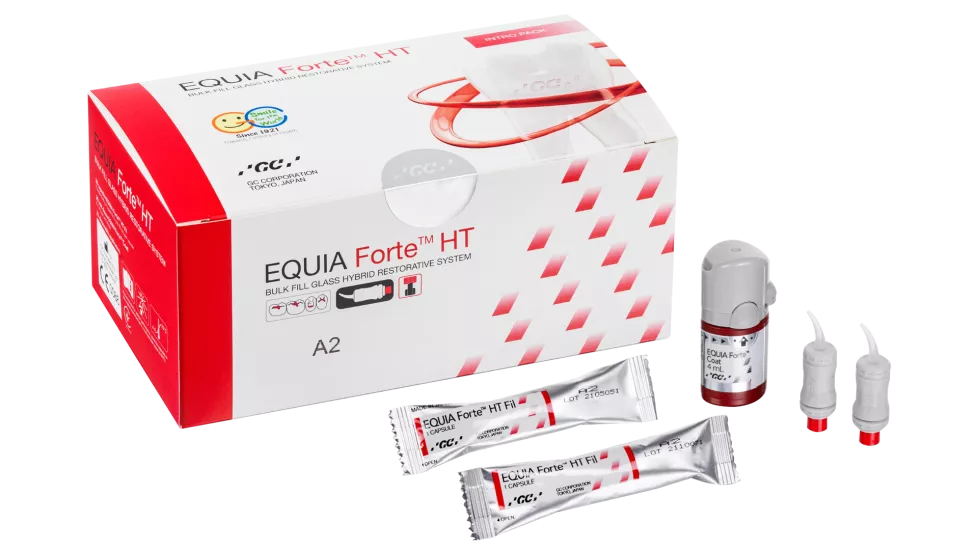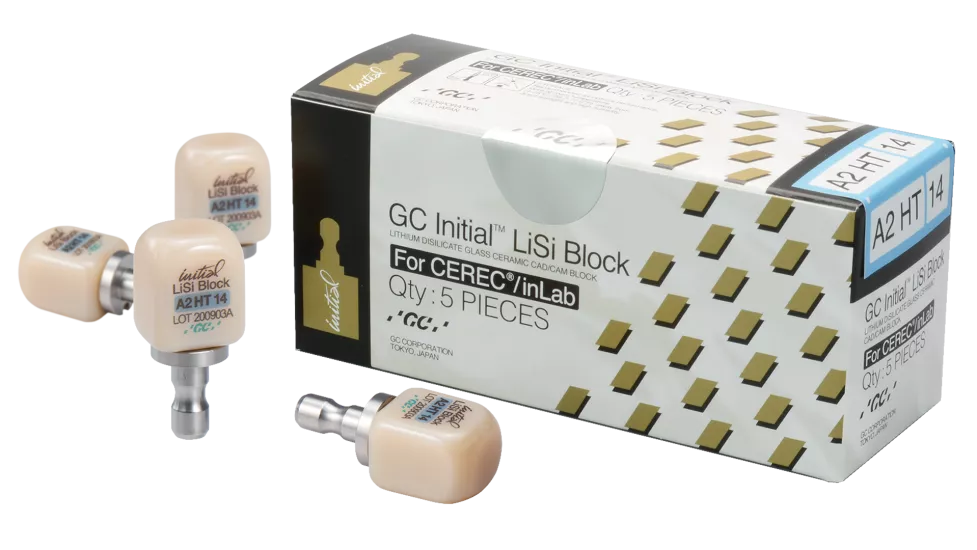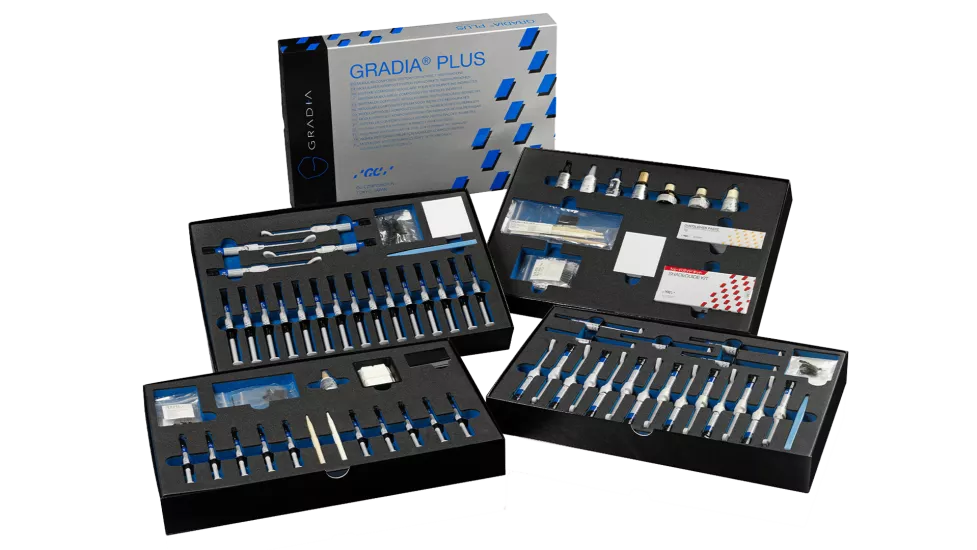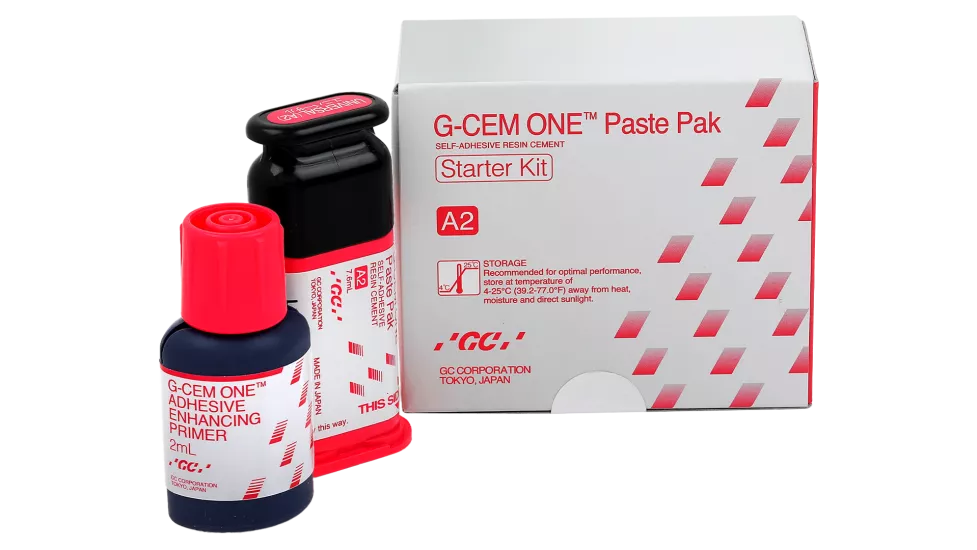Focus on the materials science behind reinforced silicate ceramics for CAD/CAM
05/29/2023
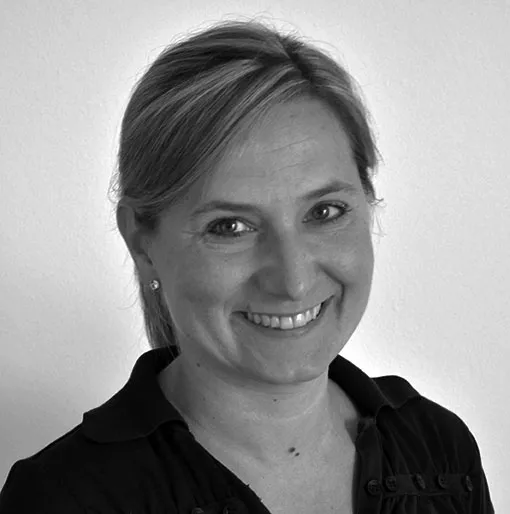
BIOGRAPHY:
Prof. Dr. Dipl. Ing. (FH) Bogna Stawarczyk, M.Sc. studied dental technology (B.Sc.) at the Osnabrück University of Applied Sciences after completing her dental technician training. She completed her studies in 2006 with her Bachelor thesis at the Clinic for Dental Prosthetics at the University of Berne. Later, she completed her Master of Science Dental Technology postgraduate at Danube University Krems (Austria). From 2008 to 2009, she was the Head of Materials Science Research of the Clinic for Fixed and Removable Prosthodontics and Dental Materials Science, University of Zurich (Switzerland). Ms. Stawarczyk completed her doctorate in 2013 and her habilitation in 2015 at the Ludwig-Maximilians-University in Munich, where she was appointed Head of Materials Science Research in 2015 and extracurricular Professor in 2020. Currently, she is also the Vice President European Association of Dental Technology (EADT), gives numerous lectures about modern dental materials and teaches Materials Science at several Dental Technology Master Schools. She has authored over 350 national and international publications.
Her research is focused on tooth-coloured materials, their processing techniques and cementation. In addition to applied research, she attaches great importance to fundamental research, the optimization and new development of innovative dental and dental materials and their manufacturing technologies.
Fully Crystallized Lithium Disilicate Ceramic Blocks
An interview with Prof. Dr. Bogna Stawarczyk, Germany
With the large number of CAD/CAM ceramics, the differences within material classes are not obvious at first glance. There is a need for knowledge of material science in order to classify the ceramics accordingly, to use them according to the indication and to process them correctly. In this interview, Annett Kieschnick talked to Prof. Dr. Bogna Stawarczyk (Materials Science Research at the Department of Prosthetic Dentistry, LMU Munich), who has dedicated her research to CAD/CAM materials, together with her team. Among other things, the Munich team is nationally and internationally renowned for their groundbreaking work in the field of zirconium oxide and silicate ceramics. The focus of the interview is on lithium disilicates. A recently launched product, Initial LiSi Block (GC), which has some special features, will be discussed.
Can you please specify which class of materials lithium disilicate ceramics belongs to?
Prof. Stawarczyk: In general, dental ceramics can be divided into two groups – oxide ceramics (e.g. zirconia) and silicate ceramics. Lithium disilicate is a silicate ceramic that is additionally reinforced with lithium disilicate crystals. The reinforcement crystals result in higher mechanical properties (e.g. flexural strength or fracture toughness) compared to non-reinforced silicate ceramics (feldspar or leucite ceramics). The superordinate group of lithium disilicate ceramics is therefore lithium silicate. There are three subgroups here. Lithium disilicate ceramic has been available on the market for a long time. In addition, lithium metasilicate and lithium aluminosilicate ceramics have been around for a few years. The main components of these ceramics are lithium oxide and silicon oxide.

CAD/CAM manufactured veneers made of the lithium disilicate ceramic Initial LiSi Block (GC)
Courtesy of MDT C. von Bukowski, Germany
So, there are different lithium silicate ceramics and various products from several manufacturers. How can these be distinguished from a materials science perspective?
Prof. Stawarczyk: For us, the composition of the ceramics and the manufacturing process are interesting and ultimately decisive for the material’s properties. The glassy phase of all three lithium silicate ceramics is silicon oxide; the crystalline phase is lithium oxide. Lithium disilicate and lithium metasilicate ceramics are formed by crystallization of lithium oxide and silicon oxide. The molar ratio between lithium oxide and silicon oxide in the glassy phase determines the formation of either lithium metasilicate or lithium disilicate crystals. In lithium aluminosilicate ceramics, a co-crystallization of lithium disilicate and lithium aluminosilicate takes place.
That sounds very technical. What are the differences in processing in practice and laboratory?
Prof. Stawarczyk: Here, too, it is said that the industrial manufacturing process and the composition of the ceramics determine the application properties. Since the ceramics are reinforced differently, there are certainly deviations in certain properties. For example, all three lithium silicate ceramics are suitable for CAD/CAM milling, but at the moment, there is only lithium disilicate ceramic for the pressing technique. Furthermore, some ceramics are pre-crystallized and others are fully crystallized, which affects the manufacturing process. In addition, a lithium aluminosilicate ceramic cannot be individualized by glaze firing in the furnace with conventional ceramic due to the low thermal expansion coefficient (CTE). In contrast, lithium disilicate ceramics, for example, can be characterized with ceramic-based paints. In general, lithium disilicate ceramics have a comparable CTE value with zirconia. So, to remember it easily: If a ceramic’s CTE value is comparable to zirconia, it also bonds to a lithium disilicate ceramic. Hence, there are important differences between the lithium silicate ceramics that the practitioner should be aware of.
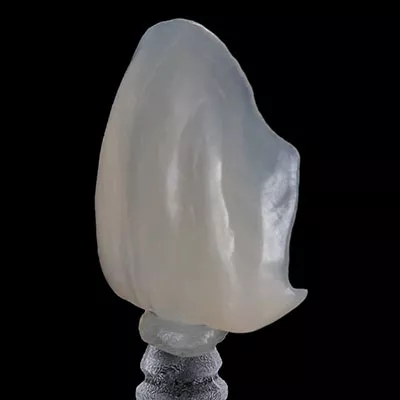
CAD/CAM manufactured veneer for an anterior tooth made of lithium disilicate ceramic (Initial LiSi Block) after the grinding process.
Courtesy of MDT C. von Bukowski, Germany
Nowadays, new optimized ceramics are constantly coming onto the market. Some time ago, GC has launched a fully crystallized CAD/CAM block (Initial LiSi Block). What is so particular about it?
Prof. Stawarczyk: Basically, Initial LiSi Block is a lithium disilicate ceramic. A special feature is that the material is already in the definitive crystallized state and thus already has its maximum density and final flexural strength. Therefore, the ceramic does not have to be recrystallized in the furnace after the grinding process. Another positive aspect is that the Martens hardness parameters (Martens hardness and penetration modulus) are slightly lower compared to other lithium silicate ceramics, which means that the edge stability is very high. The ceramic is easy to mill. The risk of edge breakouts or brittleness is reduced because of these Martens hardness parameters. The light-optical properties also appear very good. From a processing point of view, the fast production time should also be mentioned as a special feature; the additional crystallization fire is omitted. Nevertheless, individualization is still possible on request. Within a short time, ceramic-based paints can be used to individualize the restorations from the monochromatic block.*
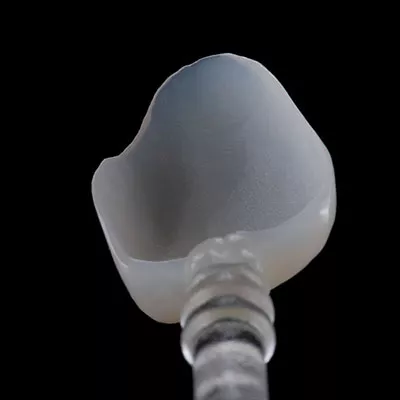
This posterior crown has also been milled from the fully crystallized lithium disilicate (Initial LiSi Block). The picture illustrates the high edge stability, which is due to a slightly reduced Martens hardness.
Courtesy of MDT C. von Bukowski, Germany
You have subjected the ceramic to some laboratory tests for preliminary research. What were your first findings?
Prof. Stawarczyk: Compared to other lithium silicate ceramics for milling, there was a lower Martens hardness, which correlates with the good edge stability Initial LiSi Block has. In addition, the penetration modulus (Indentation modulus/ elasticity modulus) is slightly lower than that of comparable lithium silicate ceramics. Therefore, even finely tapered, sharp edges can be precisely implemented. We’ve tested various mechanical properties and found that the reliability (Weibull module) of Initial LiSi Block is high. From this it can be concluded that the material does not fracture spontaneously and unexpectedly. In summary, a clear trend can be drawn from our first preliminary tests: the material has positive Martens hardness parameters, which indicate that the edge stability of the milled restoration is high.
At LMU, you do a lot of research on CAD/CAM materials and pay attention to the very practical questions from practice and laboratory. Are there any questions that are brought to your attention repeatedly?
Prof. Stawarczyk: CAD/CAM materials play a key role in our research because they are the future. The material quality is high and standardized due to industrial production. Questions from the practice and the laboratory usually concern processing: “How can the materials be grinded and polished?”, “How much rework is necessary?”, “Are the materials compatible (e.g. with paints)?”, and so on. Very often, the focus is also on questions relating to intraoral luting. Here, I come back to the lithium disilicate ceramic Initial LiSi Block: from my point of view, restorations made of this ceramic should be cemented adhesively. The milled restoration is etched for 20 to 30 seconds and after conditioning with a silane-containing primer, seated with a conventional resin composite cement or, according to the manufacturer’s instructions, with a self-adhesive resin composite cement (e.g. G-CEM ONE from GC) according to the protocol. Especially with the sensitive step that cementation is, material science knowledge is important. Everything on this important topic can be read and experienced in the interactive Materials Science Compendium “Dentale Befestigungsmaterialien” [only in German – Ed.].
What material trends do you see for prosthetic dentistry – in the near and distant future?
Prof. Stawarczyk: In general, we try to “copy” the properties of natural hard tooth substance in dental restorative materials. This is not possible with the currently available materials. For example, the elasticity modulus of ceramic materials is too high and that of polymer-based materials too low. Compromises lead to other disadvantages. So, it’s always a balancing act. It is conceivable that thermoplastics will gain a higher priority in the future but currently, the aesthetic properties are limited. As far as aesthetics are concerned, ceramic materials are convincing and will remain so for years to come. If these ceramic materials could then be implemented in the 3D printing process at some point, we would work much more economically in terms of material consumption and quick achievement of long-lasting restorations. The printing of dental ceramics is certainly not the near future in prosthetic dentistry, but it is a very conceivable scenario.
Thank you very much for the interview,
Annett Kieschnick, Berlin
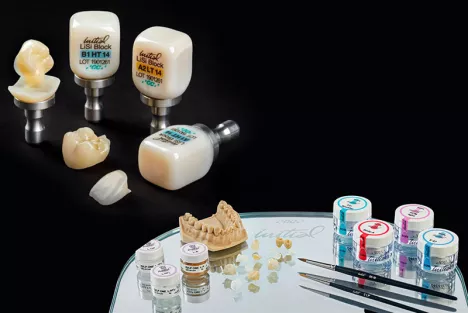
*Editor’s note
The fully crystallized lithium disilicate ceramic Initial LiSi Block is based on GC’s proprietary HDM technology, which has already proven itself in the press ceramic Initial LiSi Press. To individualize the milled restorations, e.g. the paintable colour-and-form ceramic concept Initial IQ ONE SQIN (GC) concept can be used.

